The plan today was a repeat trip to Landican Cemetery and Arrowe Park to check on some of the trees we saw in bud on 24th February, but before doing that we travelled one extra stop to the Thingwall corner to look at the wonderful sign which names the area in Norse runes. The local authorities are so proud of their Viking past!
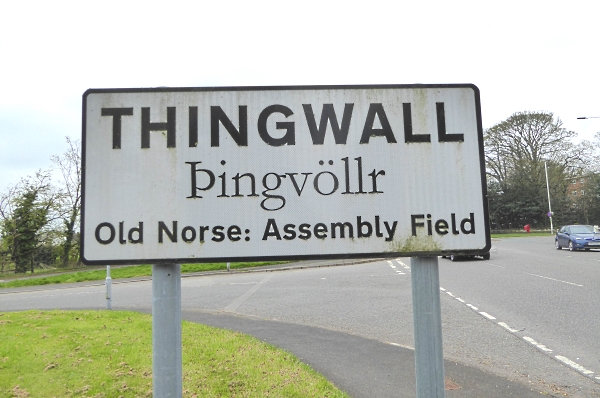
In Landican cemetery, on either side of the little CWGC area, are two Callery Pears (Pyrus calleryana ‘Chanticleer’). Their pink buds are now white flowers, larger than Blackthorn or Hawthorn, but not as big as Medlar.
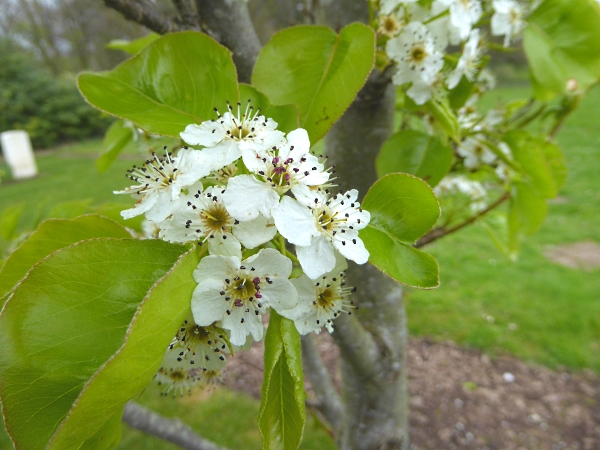
There were no exciting birds about, just Magpies and Wood Pigeons, although we heard the calls of Goldfinch and Greenfinch. The Whitebeams were coming into leaf, with each foliage cluster standing upright like Magnolia flowers. One pretty little ornamental tree was a Willow-leaved Pear.
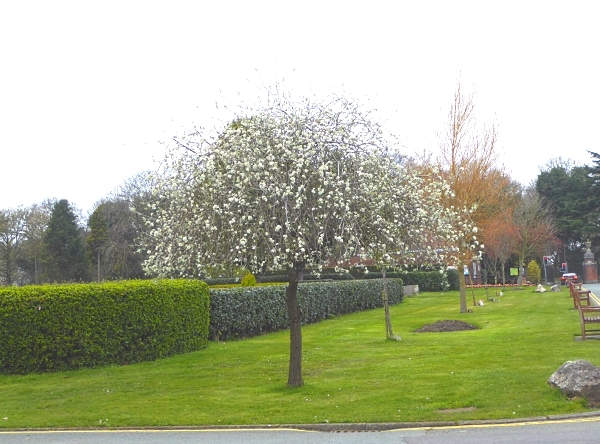
After lunch we crossed over to Arrowe Park, entering via the garden of the derelict ranger’s house. It must have been beautiful in its heyday, but the neglected Magnolia tree is now in magnificent flower.
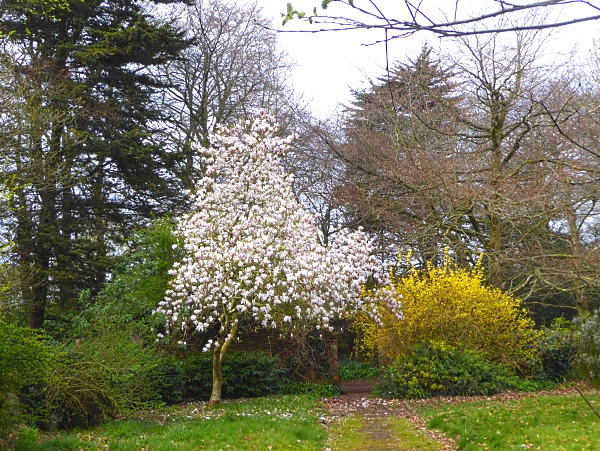
Wild Garlic (Ramsons) was coming into flower in the wild woodland area behind the house, as were the Bluebells. Earlier we had seen buds of Garlic Mustard (also called Jack-by-the-Hedge). The Norway Maple flowers are still hanging on, and the buds of the Horse Chestnuts have opened to reveal the huge thrusting flower heads.

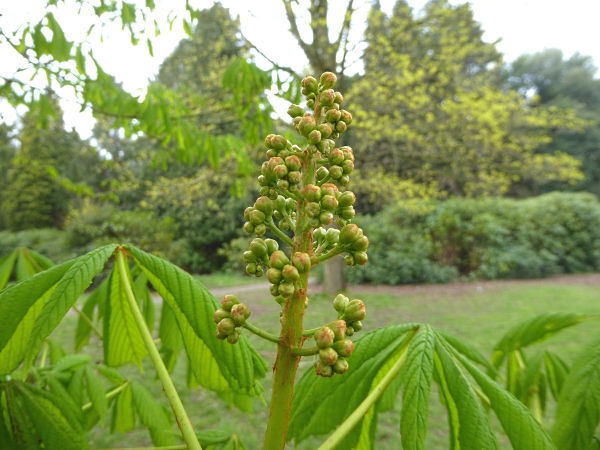
The sun came out as we approached the pair of mystery trees by the tennis courts, which we had tentatively identified as some sort of Elm. Unfortunately, since February, all the easily-accessible, low-drooping branches have been trimmed off by the park keepers, making it harder to see what kind of flowers had emerged from those pink clusters. But now I can see that they have to be Elms of some kind, with those immature seeds surrounded by oval wings (each called a “samara”).
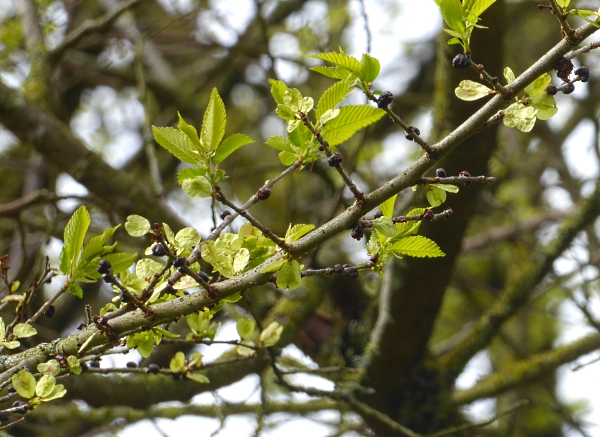
I currently favour an identification of Siberian Elm Ulmus pumila. Other indications are the ridged bark, (formerly) straggly untidy branches, glossy serrated leaves, rich brown buds and the symmetrical twig branching. Mitchell calls them “rare, mainly S of England” but the current Collins tree guide suggests they were planted more frequently in recent decades because they are resistant to Dutch Elm Disease
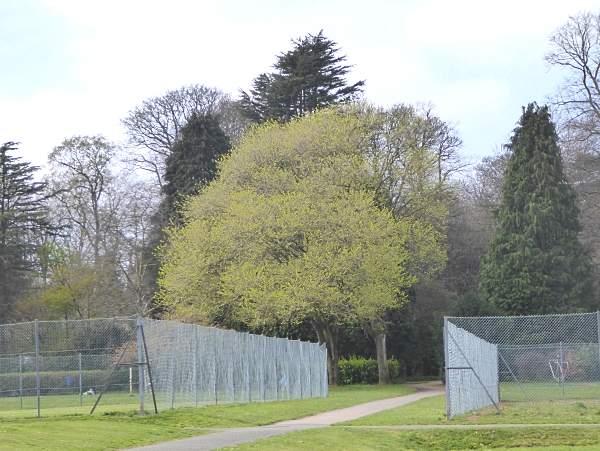
Nearer the exit gate is another uncommon tree, a Scarlet Oak Quercus coccinea. It’s a tall young tree, just breaking into bud high overhead.
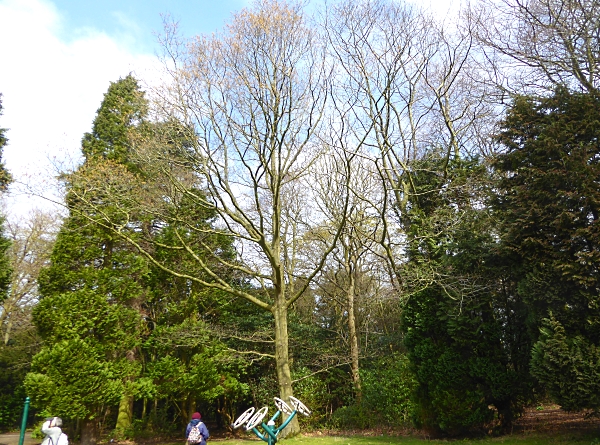
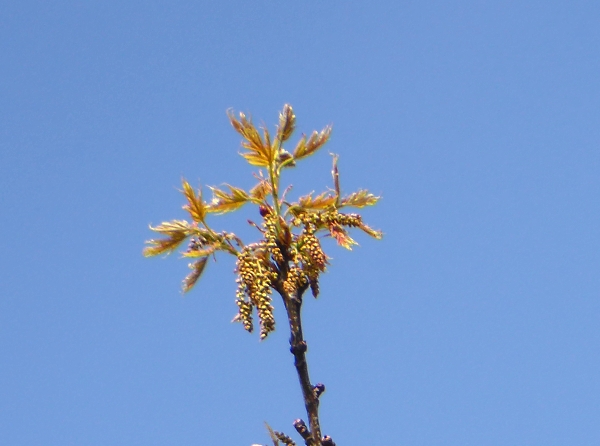
On the ground beneath it were last year’s dead leaves and the distinctive first year acorns with their beautifully-figured cups.
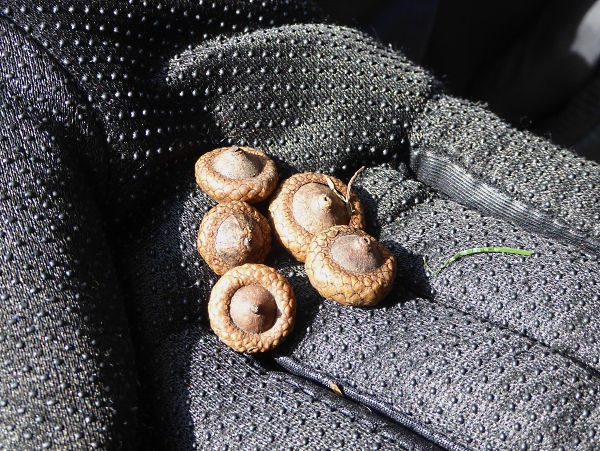
A tiny brown Ladybird (5-6mm) was resting in the direct sun on a Laurel leaf. It didn’t move at all, and might have been dead, but perhaps it had just woken up from wintering in the leaf litter and was trying to revive itself. I’m pretty sure it was the Cream-spot ladybird Calvia 14-guttata.
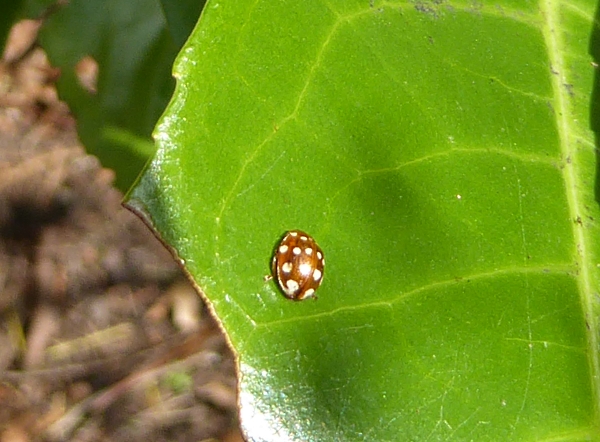
Blackbirds were nesting in a Cypress and scolded us as we passed. A Robin pecked about boldly on the path. As we turned left to walk along to the hospital for the bus, we were surprised to notice that the old cast iron gates of Arrowe Park had arrow motifs all over them
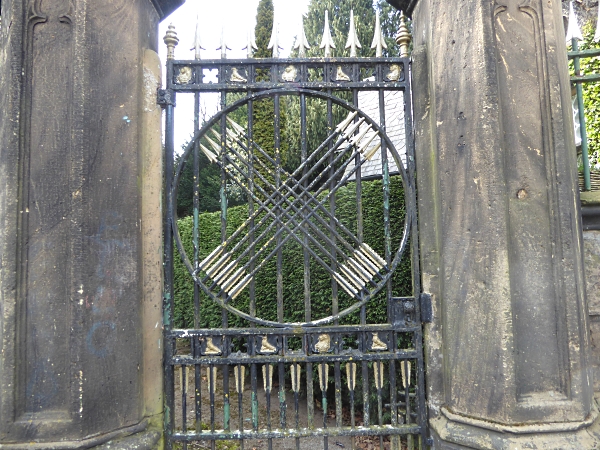
Public transport details: Bus 472 from Sir Thomas Street at 10.10, arriving Pensby Road / Thingwall corner at 10.50. Returned from Arrowe Park Hospital on the 471 at 2.11, arriving Liverpool 2.35.
